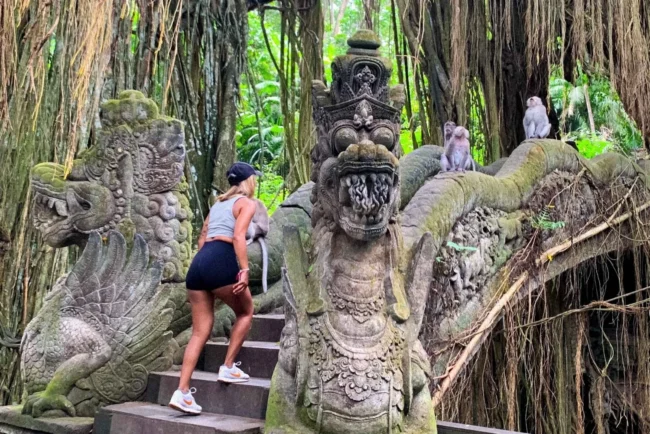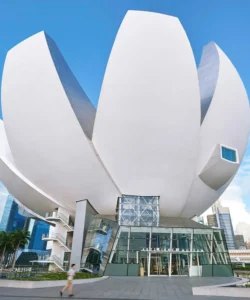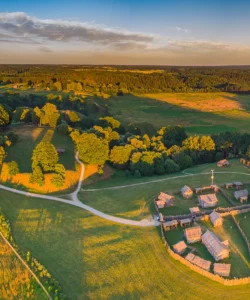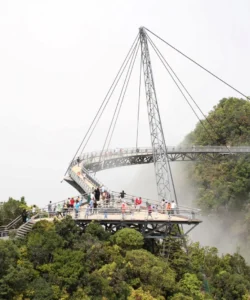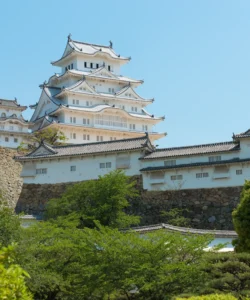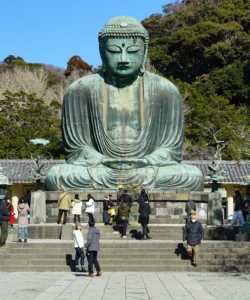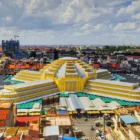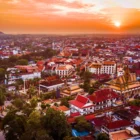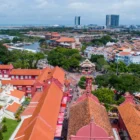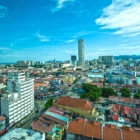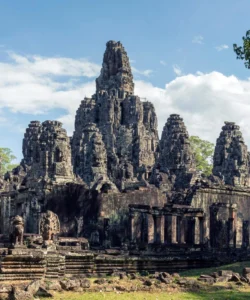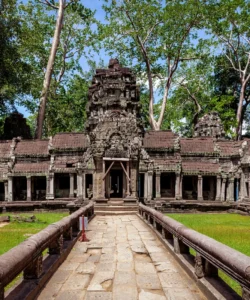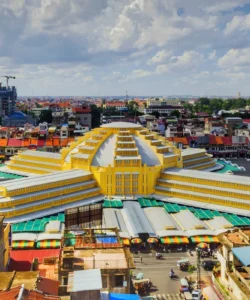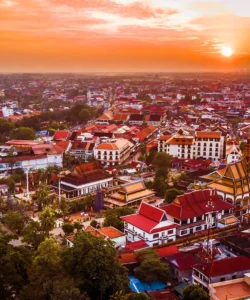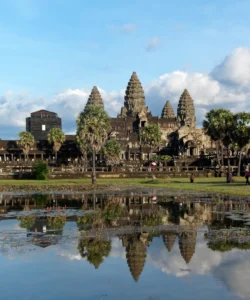The Sacred Monkey Forest Sanctuary, more commonly known as Ubud Monkey Forest, is a renowned nature reserve and Hindu temple complex located in Ubud, Bali, Indonesia. It’s a fascinating and sacred place where an active population of long-tailed macaques roams freely amidst ancient trees, moss-covered temples, and lush tropical foliage.
Name: Sacred Monkey Forest Sanctuary (also known as Ubud Monkey Forest, Monkey Forest Ubud, or Mandala Suci Wenara Wana)
Address: Jl. Monkey Forest, Ubud, Kecamatan Ubud, Kabupaten Gianyar, Bali 80571, Indonesia.
It is conveniently located within walking distance from the center of Ubud, Bali’s cultural and artistic hub.
How to Get There:
The Monkey Forest is highly accessible, especially if you are staying in Ubud:
- Walking (Most Common): If you are staying in Ubud town, it’s a pleasant walk from many guesthouses and hotels down Monkey Forest Road, a lively street lined with shops and restaurants leading directly to the entrance.
- Scooter/Motorbike Rental: A popular way to get around Ubud and Bali, allowing you to ride directly to the entrance. Parking is available.
- Taxi/Ride-Hailing Apps (Grab/Gojek): Easily available throughout Ubud for a direct ride to the entrance.
- Guided Tour: Many half-day or full-day tours of Ubud and its surroundings include a stop at the Monkey Forest.
- Entrance Fee: There is a mandatory entrance fee to enter the sanctuary, which helps fund its maintenance and the well-being of the monkeys.
Landscape and Architecture:
The Sacred Monkey Forest Sanctuary seamlessly blends natural forest landscapes with ancient stone temples and intricate carvings, creating a mystical and somewhat eerie ambiance.
- Lush Tropical Forest: The sanctuary spans approximately 12.5 hectares (30.9 acres) of dense, ancient tropical rainforest, dominated by towering nutmeg trees (around 115 species of trees) that provide ample shade and a natural habitat for the monkeys. The forest floor is often covered in moss, and twisting tree roots add to the primeval feel.
- Deep Ravines and Streams: Several deep ravines and streams cut through the forest, creating natural barriers and contributing to the cool, humid microclimate. Stone bridges and pathways cross these features.
- Hindu Temple Complex: Within the forest are three important Hindu temples, integral to the spiritual aspect of the sanctuary:
- Pura Dalem Agung Padangtegal (Main Temple): Dedicated to the god Shiva, this large temple complex is located in the southwestern part of the forest. Its intricate stone carvings depict mythological figures and demons.
- Pura Beji (Holy Spring Temple): Situated in the northwest, this temple is used for purification rituals and features a bathing temple, accessible via a steep stone staircase leading to a stream.
- Pura Prajapati (Cremation Temple): Located near the eastern side of the forest, next to the cemetery, dedicated to Prajapati.
- Moss-Covered Stone Structures and Carvings: Throughout the forest, you’ll find ancient, moss-covered stone statues, carvings, and bridges, often depicting mythical creatures (like dragons and monkeys) and Hindu deities. These weathered structures add to the mystical and timeless atmosphere of the place.
- Dragon Bridge and Dragon Statues: A prominent feature is the stone bridge adorned with ornate dragon statues, creating a picturesque spot.
- Well-Maintained Pathways: While the forest feels wild, a network of well-maintained stone pathways and staircases guides visitors through the various areas, ensuring safety and accessibility while allowing for close observation of the monkeys and temples.
What Makes It Famous:
- Free-Roaming Monkeys: The primary and most famous attraction is the large population of long-tailed macaques (Macaca fascicularis) that roam freely throughout the sanctuary. Visitors can observe their natural behaviors up close, though interaction should be cautious.
- Sacred and Spiritual Site: It’s not just a tourist attraction but an important sacred Hindu site for the local community, symbolizing the harmonious relationship between humans and animals, and protecting the spiritual balance of the area. The temples within the forest are still actively used for ceremonies.
- Lush and Mystical Ambiance: The ancient forest, moss-covered statues, and deep ravines create a unique, almost mystical atmosphere that feels ancient and untouched, providing a stark contrast to Bali’s more developed areas.
- Unique Blend of Nature, Culture, and Wildlife: The sanctuary offers a distinct blend of natural beauty (ancient forest), cultural heritage (Hindu temples and carvings), and wildlife interaction (the monkeys), making it a multi-faceted experience.
- Educational and Conservation Role: The Monkey Forest serves as a research center for primatologists and contributes to the conservation of the macaques and the unique flora of the area. Visitors learn about the monkeys’ social structures and behaviors.
- Popular Tourist Destination: Its convenient location in Ubud and its unique appeal make it one of Bali’s most visited and iconic tourist attractions.
Differences from Some Other Wonders:
- Integrated Wildlife, Culture, and Religion: Unlike traditional zoos (Singapore Zoo) or purely natural wildlife parks (Komodo National Park, Taman Negara), the Sacred Monkey Forest Sanctuary is a unique blend where wildlife (monkeys) coexists freely within an active Hindu temple complex and a sacred forest. This integration of spiritual, cultural, and natural elements is its defining characteristic.
- Free-Roaming Primates in a Culturally Significant Site: While other places might have wild monkeys, the sheer density and habituation of the long-tailed macaques within a small, easily accessible, and culturally revered forest makes for a very particular and intense interaction, different from a typical safari.
- Ancient Trees and Moss-Covered Structures: The specific aesthetic of ancient, towering nutmeg trees and weathered, moss-covered stone carvings and temples creates a unique visual and atmospheric “old world” feel that sets it apart from more modern architectural wonders or pristine natural landscapes.
- Emphasis on Respectful Interaction: While monkeys are wild, there’s a strong emphasis on visitors respecting the sacredness of the site and the animals’ space, leading to a different visitor dynamic than a casual park.
- Mythological and Spiritual Context: The forest is deeply embedded in local Balinese Hindu beliefs, with tales and spiritual significance attributed to the monkeys and the temples, adding a layer of cultural depth not found in purely natural or amusement-focused attractions.
- Small, Contained Area: Unlike vast national parks, the Monkey Forest is a relatively compact area, allowing for an immersive experience within a manageable timeframe.
